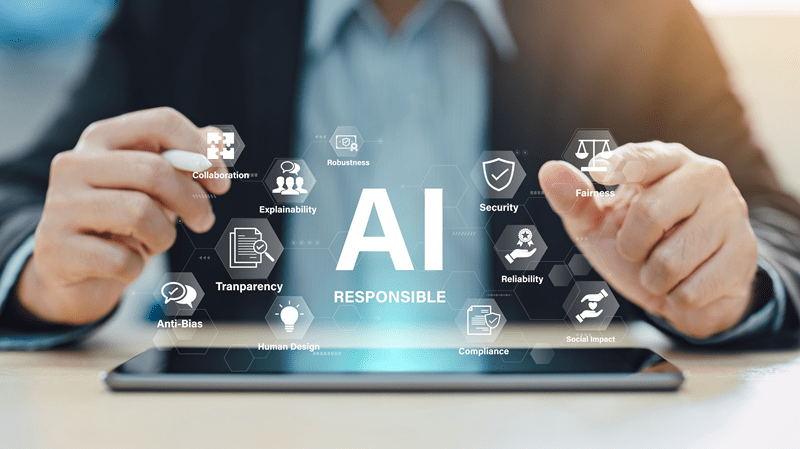
Technology plays a central role in the current world because most people use AI tools that make decision for them or guide their choices. However, it is essential that the systems are able to make fair decisions. Responsible AI makes sure that all the responses remain fair.
However, many people are still unsure what is responsible AI and how it actually works. If you are one of them, this blog is exactly what you need. Here, you will find out the clear definition of responsible artificial intelligence and how its principles play a huge role in today’s world.
Imagine someone looking at a device and thinking, “How did it decide that?” That is where the idea of what is responsible AI begins. It is a method of creating and using systems in a safe and sensible way. The main idea is to make sure that these systems do not mislead people or offer responses that feel unfair.
When someone understands what is responsible AI, they see that it is not a single step. It is a full process that touches how a system is built, tested and used. It helps developers slow down and think about how their choices affect real people. And that matters more now because so many tools use data and automated decisions.
One of the key parts of what is responsible AI is clarity. People should be able to understand how a tool reached a result. It does not have to explain every detail, just enough so that the decision makes sense. When things are easier to follow, people feel more comfortable using the tool.
Privacy also plays a big part in this. These systems often need personal information to work, and they must handle that information with care. It must be protected, and people should not feel like they are losing control over it. So responsible design is really about safety, clarity, fairness and care. When these come together, the system becomes something people can trust.
Must Read: How Generative AI Trends are Redefining Businesses in 2025?
The principles of responsible AI are like rules that make sure that system works properly. They even make the whole process easier for managing because these principles explain the AI system what matters most.
The following list will help you understand the different principles of responsible AI:
A system should give answers that make sense. If people cannot understand the result, they may feel confused or unsure. This makes the system easy to follow.
Another principle makes sure that results do not treat one group of people better or worse. It encourages steady checks to avoid any hidden unfairness.
A stable system should handle sudden changes or strange inputs without causing harm. This creates a smoother and safer experience.
People should know the purpose of the tool and its limits. When things are open, users can make better decisions about how much they want to rely on the system.
If the system uses personal data, it must treat that data with respect. It should be protected and managed with care at all times.
These principles of responsible AI may seem simple on paper, but when followed correctly, they help make AI tools more steady, more clear and easier for people to trust.

People ask what is a best practice for responsible AI because they want a simple list of steps that keep systems safe. These practices guide teams in a clear and steady direction.
These points show that what is a best practice for responsible AI is not about one big decision. It is about many small and steady steps taken over time.
The next part shows how the principles of responsible AI appear in everyday life. These points make the idea feel more familiar and real.
Top Pick: Digital Trends 2025 with Spatial Computing and Interfaces
After you learn what is responsible AI, it becomes easier for you to understand its importance for long-term growth. A combination of the rules, constant checks and open communication creates a strong foundation and supports the systems to operate smoothly and safely, while remaining trustworthy.
The best results come when the principles of responsible AI guide daily work, not only early planning. People who ask what is a best practice for responsible AI often learn that progress grows through simple, steady habits that shape better systems over time.
Responsible AI helps explain how safe and fair systems are made. By learning what is responsible AI and the principles of responsible AI, people can understand the value of careful design. When teams follow steady practices, they create systems that remain trustworthy and easy for people to rely on.
This content was created by AI